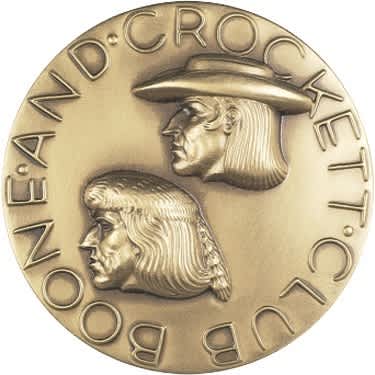Record Grizzly Ignites Questions about Trophy Categories
Boone and Crockett Club 05.12.14

News traveled fast when conservationists learned the largest grizzly bear ever taken by a hunter had been entered into Boone and Crockett records. Nearly as quickly, however, came questions about why grizzlies are distinguished from Alaska brown bears. After all, aren’t these technically the same species?
The Boone and Crockett Club announced the new record grizzly on May 5.
Soon after, an Anchorage, Alaska, newspaper headline chided, “Giant Grizzly is One for Some Record Books, But Not Alaska’s.” The article pointed out that Ursus arctos does in fact grow to 10 feet tall along the coast, much larger than the newly heralded 9-footer killed far inland near Fairbanks. Why all the fuss about this “alleged record-setting” specimen from upstate?
As you read below the official explanation from Club officials, keep in mind that the main objective of Boone and Crockett records-keeping is to provide a conservation tool for biologists. Comparing and contrasting trophy data helps gauge outstanding habitat, strong recruitment of game animals into older age classes, sustainable harvest objectives and other elements of sound wildlife management and fair-chase hunting.
This from the Club:
Genetically, this is indeed the same bear across its range. But, morphologically, there are differences. For Boone and Crockett records-keeping purposes, a geographic boundary was established to recognize the two separate body types for Ursus arctos.
Bears living near the coast (Boone and Crockett’s Alaska brown bear classification) feast on high-protein salmon returning to the rivers each summer. These bears’ body and skull size have adapted to be far larger than bears living further inland. Coastal bears move little, establish themselves on a section of river and spend their lives close to a bounty of fish.
The life of an interior bear (Boone and Crockett’s grizzly bear classification) is far different. While they may eat fish in some cases, their diet is a wide array of food sources from grubs and berries to migrating caribou and moose calves. More nomadic, these bears also are generally more aggressive as their survival literally hinges on being able to catch and kill their next meal.
In order for trophy records to be useful for conservation and management purposes, Boone and Crockett Club recognized that data on the smaller interior bears shouldn’t be lumped with those of the larger coastal bears.
The Club also developed a standardized way to measure bear specimens. Although it’s common for hunters and other observers in the field to size a bear by its height or squared length of its hide, this method is not useful for records keeping. Hides can be stretched or dried, altering measurements. These measurements cannot be replicated later after tanning or mounting. Because of this, Boone and Crockett chose to use skull measurements.
Boone and Crockett maintains trophy records to gauge the success of conservation programs and to celebrate fair-chase hunting as a component of game management.
All bears are scored based on skull length and width measurements. Current World’s Records: Alaska brown bear, 30-12/16; grizzly bear, 27-13/16; black bear, 23-10/16.

